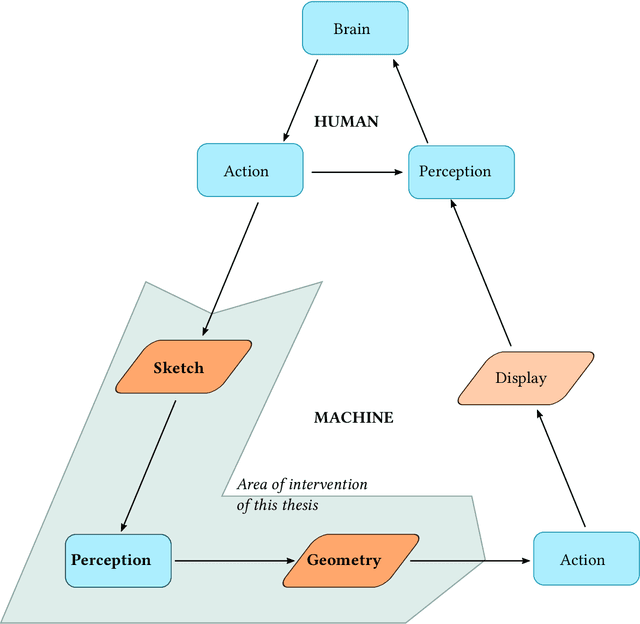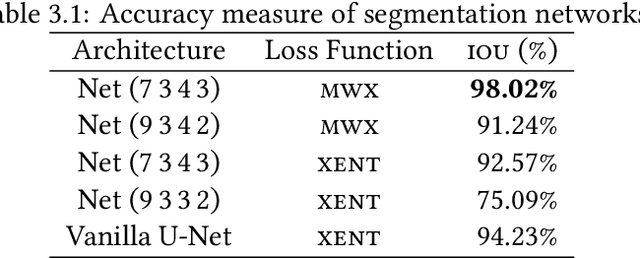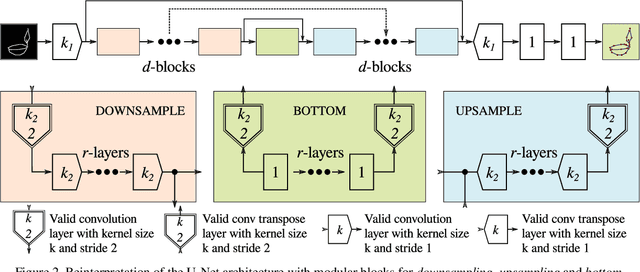Raghav Brahmadesam Venkataramaiyer
Geometric Understanding of Sketches
Apr 13, 2022



Abstract:Sketching is used as a ubiquitous tool of expression by novices and experts alike. In this thesis I explore two methods that help a system provide a geometric machine-understanding of sketches, and in-turn help a user accomplish a downstream task. The first work deals with interpretation of a 2D-line drawing as a graph structure, and also illustrates its effectiveness through its physical reconstruction by a robot. We setup a two-step pipeline to solve the problem. Formerly, we estimate the vertices of the graph with sub-pixel level accuracy. We achieve this using a combination of deep convolutional neural networks learned under a supervised setting for pixel-level estimation followed by the connected component analysis for clustering. Later we follow it up with a feedback-loop-based edge estimation method. To complement the graph-interpretation, we further perform data-interchange to a robot legible ASCII format, and thus teach a robot to replicate a line drawing. In the second work, we test the 3D-geometric understanding of a sketch-based system without explicit access to the information about 3D-geometry. The objective is to complete a contour-like sketch of a 3D-object, with illumination and texture information. We propose a data-driven approach to learn a conditional distribution modelled as deep convolutional neural networks to be trained under an adversarial setting; and we validate it against a human-in-the-loop. The method itself is further supported by synthetic data generation using constructive solid geometry following a standard graphics pipeline. In order to validate the efficacy of our method, we design a user-interface plugged into a popular sketch-based workflow, and setup a simple task-based exercise, for an artist. Thereafter, we also discover that form-exploration is an additional utility of our application.
Can I teach a robot to replicate a line art
Oct 17, 2019



Abstract:Line art is arguably one of the fundamental and versatile modes of expression. We propose a pipeline for a robot to look at a grayscale line art and redraw it. The key novel elements of our pipeline are: a) we propose a novel task of mimicking line drawings, b) to solve the pipeline we modify the Quick-draw dataset to obtain supervised training for converting a line drawing into a series of strokes c) we propose a multi-stage segmentation and graph interpretation pipeline for solving the problem. The resultant method has also been deployed on a CNC plotter as well as a robotic arm. We have trained several variations of the proposed methods and evaluate these on a dataset obtained from Quick-draw. Through the best methods we observe an accuracy of around 98% for this task, which is a significant improvement over the baseline architecture we adapted from. This therefore allows for deployment of the method on robots for replicating line art in a reliable manner. We also show that while the rule-based vectorization methods do suffice for simple drawings, it fails for more complicated sketches, unlike our method which generalizes well to more complicated distributions.
 Add to Chrome
Add to Chrome Add to Firefox
Add to Firefox Add to Edge
Add to Edge